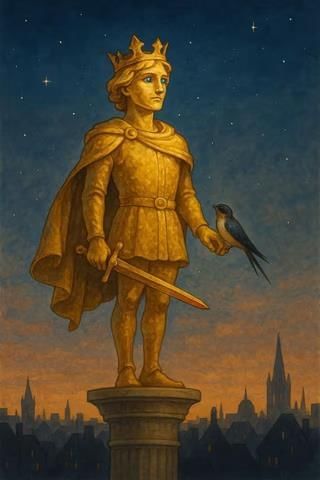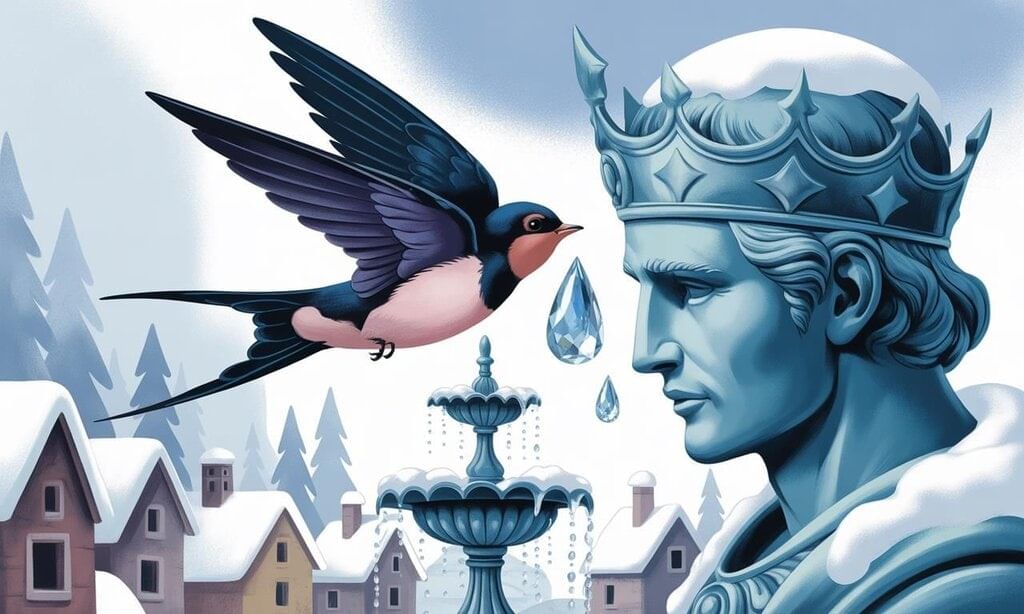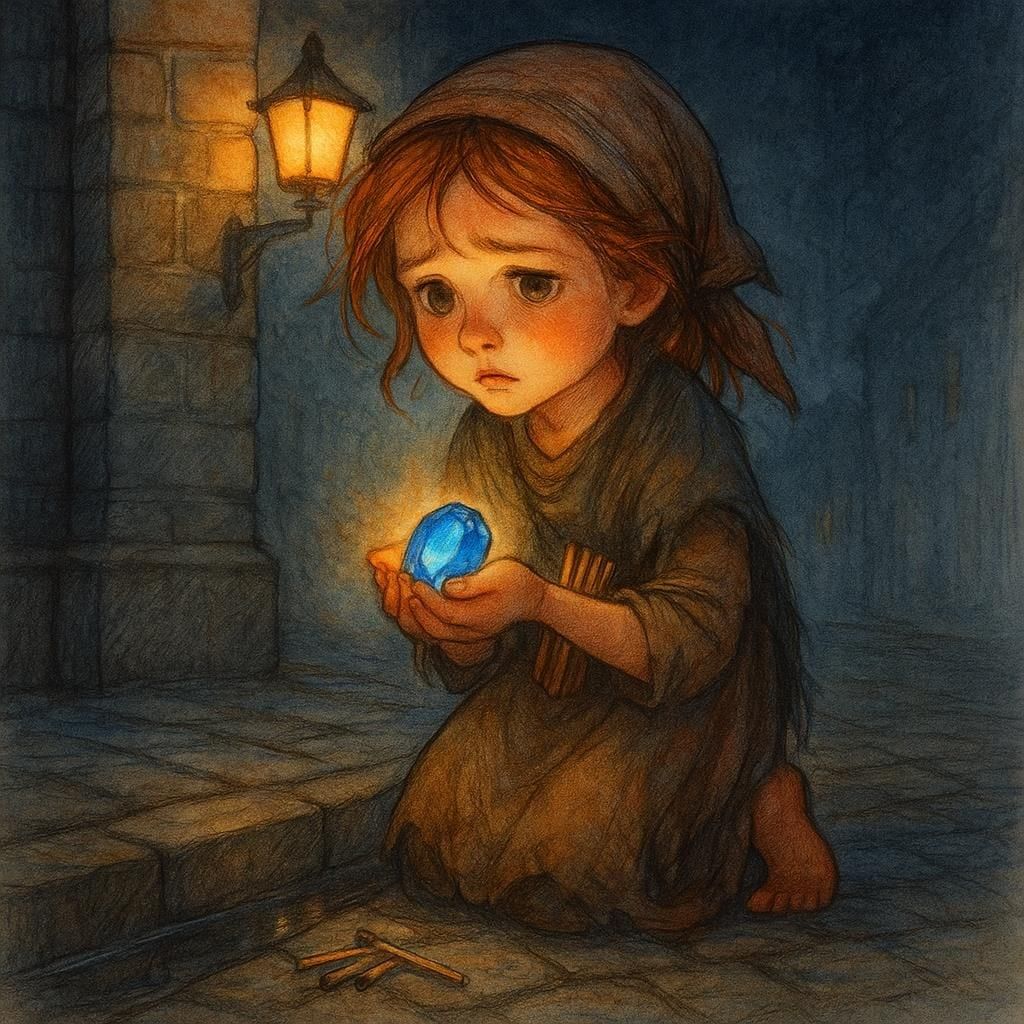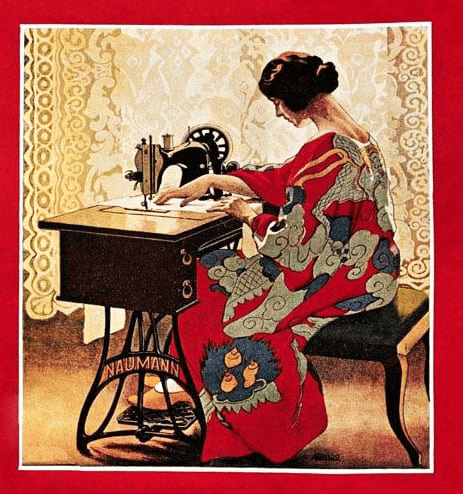Character Sketches - The Happy Prince | English Class 9 PDF Download
| Table of contents |

|
| The Happy Prince |

|
| The Swallow |

|
| Match Girl |

|
| Seamstress |

|
| The Young Playwright |

|
| The Mayor and the Councillors |

|
The Happy Prince
- The Happy Prince was once a living prince who enjoyed a life of wealth and comfort within the palace, unaware of the hardships faced by the people around him.
- After his death, he is turned into a golden statue with sapphire eyes and a ruby on the hilt of his sword. From his high vantage point, he begins to witness the suffering of the people in the city, and despite being made of lead, his heart breaks for them.
 The Happy Prince
The Happy Prince
Despite his golden exterior, the Happy Prince is not selfish. Through his friendship with the swallow, he sacrifices his precious materials—his gold, ruby, and sapphire eyes—to help those in need. This act of selflessness transforms him from a carefree, oblivious figure into a symbol of compassion.
His character embodies the themes of sacrifice, empathy, and the moral lesson that true joy comes from giving without expecting anything in return.
The Swallow
- At the beginning of the story, the little swallow is preparing to migrate to Egypt with his friends. Focused solely on his own journey and comfort, he is eager to fly to the warmth of Egypt. Initially, he is reluctant to stay and help the Happy Prince, seeing the task as an inconvenience.
 Swallow and the Prince
Swallow and the Prince - As the story unfolds, the swallow’s character undergoes a transformation. Moved by the Happy Prince’s kindness and the suffering he witnesses in the city, the swallow decides to stay and help. He becomes the prince’s messenger, carrying his jewels and gold to the poor, selflessly aiding those in need. His actions shift from self-interest to genuine empathy.
Match Girl
- The little matchgirl represents the most vulnerable in society, particularly neglected and abused children. Barefoot, hungry, and terrified of her father's punishment, she exemplifies the harsh reality of children living in poverty.
- Her desperation highlights the stark contrast between the suffering poor and the carefree wealthy, emphasising societal neglect.
 Match Girl
Match Girl
- Her character emphasises the theme of innocent suffering due to societal neglect and underscores the importance of compassion and kindness, even in the face of overwhelming hardship.
Seamstress
- The seamstress represents the harsh reality of poverty and the daily struggles faced by the working class. She is depicted with thin, worn features, pricked hands, and tired eyes, reflecting her exhausting labour.
- Her character contrasts sharply with the wealth and luxury enjoyed by the upper class. While she works on a beautiful dress for the wealthy, her own child lies ill, lacking the most basic necessities.
 Seamstress: Person whose job involves sewing clothing
Seamstress: Person whose job involves sewing clothing
The Young Playwright
- The young playwright symbolises the plight of struggling artists, facing both physical and emotional challenges. Despite his talent, he is unable to complete his play due to hunger and the cold.
- His lack of firewood and inability to buy food reflect the harsh realities faced by creative individuals who often lack the financial means to sustain themselves while pursuing their craft.
- The playwright’s situation highlights the theme of artistic struggle, where creativity is often undervalued and unsupported.
The Mayor and the Councillors
- The mayor and the councillors represent people in power who don't care about the real problems around them. They are more concerned with how the Happy Prince statue looks than with the suffering of the people. When they see the statue has lost its beauty, they decide to take it down, showing how focused they are on appearances.
- When they throw away the prince’s lead heart, it shows how they ignore true kindness and care. Their actions are the opposite of the Happy Prince's selfless giving, emphasising that inner kindness is more important than outward looks.
Each character in "The Happy Prince" serves to highlight different aspects of social inequality, compassion, and the importance of empathy. The Happy Prince and the swallow stand out as beacons of selflessness and kindness, while the other characters represent the various forms of suffering and indifference present in society.
|
180 videos|975 docs|124 tests
|
FAQs on Character Sketches - The Happy Prince - English Class 9
| 1. What is the main theme of "The Happy Prince"? |  |
| 2. How does the character of the Little Swallow contribute to the story? |  |
| 3. What does the Seamstress represent in "The Happy Prince"? |  |
| 4. How does the Mayor and the Councillors reflect authority and indifference? |  |
| 5. What message does "The Little Matchgirl" convey about innocence and suffering? |  |





















